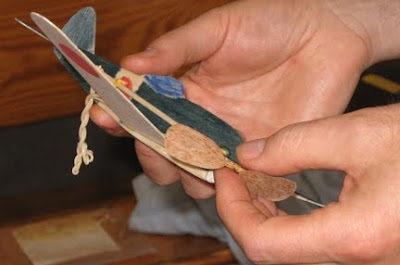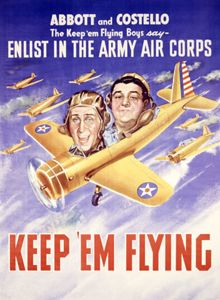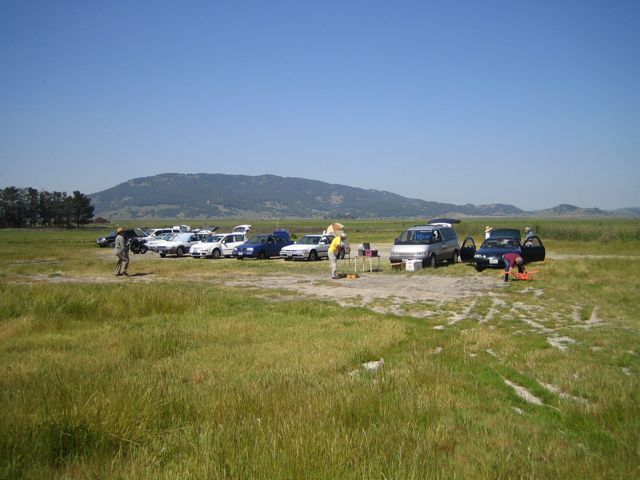The good flying days were infrequent, but we managed to get a few flights in.
11/29/09
More highlights from 2009 flying season
Labels:
meetings,
outdoor,
scale models,
sport models,
video
11/27/09
2009 Flying Season Closes
Marin Aero Club's final meeting of 2009 was on November 22 at St. Vincent's gym. For some reason the meeting was not very well attended, but we had fun and several newcomers dropped by to learn more about the club. We look forward to seeing you guys next year!
Our 2010 meeting schedule will be posted here as soon as we've determined the dates. In addition to scheduled meetings, we have impromptu flying sessions fairly often. Anyone who wants to fly with us should get on our email list. Send us an email here to be notified of club events.
Anyway, here are some photos from Sunday...

Brian showed us his newest model, a No-Cal MiG-3 built from Lidberg plans. Brian created the graphics himself.

MAC usually organizes one or two group building projects each year. How about a No-Cal Cookup for 2010?

FAC No-Cal Profile Scale emphasizes duration. No maximum flight time in this category. This could get interesting.

Speaking of cookups, here is my Little Richard, built in 2007 and repaired after crashing hard into the rafters two months ago. Good as new, just a little heavier.

Ed has a number of models that belonged to Earl Hoffman, our senior member who passed away early this year at age 96. This canard was not quite airworthy when Ed got it, but he restored it to good flying condition.

Ed also restored this EZ-B from Earl's collection. This model belongs to the lightest class of EZ-Bs, 0.5 grams.

Ed explained how Earl built the propeller, covering a balsa frame (outline and ribs) with very thin balsa shavings, just 0.002 inches thick, effectively using balsa in lieu of microfilm.

Dave K brought a couple of Bill Hurley's pistachio biplanes. The incomplete models were framed but not covered or assembled when Dave got them from the retired modeler a year ago. Dave finished the delicate models and is now flight trimming. At this point the planes fly erratically, but they fly.

Dave K's peanut Fokker Dr.I turns in tight circles above the hardwood floor. Curse you, Red Baron!
Our 2010 meeting schedule will be posted here as soon as we've determined the dates. In addition to scheduled meetings, we have impromptu flying sessions fairly often. Anyone who wants to fly with us should get on our email list. Send us an email here to be notified of club events.
Anyway, here are some photos from Sunday...

Brian showed us his newest model, a No-Cal MiG-3 built from Lidberg plans. Brian created the graphics himself.

MAC usually organizes one or two group building projects each year. How about a No-Cal Cookup for 2010?

FAC No-Cal Profile Scale emphasizes duration. No maximum flight time in this category. This could get interesting.

Speaking of cookups, here is my Little Richard, built in 2007 and repaired after crashing hard into the rafters two months ago. Good as new, just a little heavier.

Ed has a number of models that belonged to Earl Hoffman, our senior member who passed away early this year at age 96. This canard was not quite airworthy when Ed got it, but he restored it to good flying condition.

Ed also restored this EZ-B from Earl's collection. This model belongs to the lightest class of EZ-Bs, 0.5 grams.

Ed explained how Earl built the propeller, covering a balsa frame (outline and ribs) with very thin balsa shavings, just 0.002 inches thick, effectively using balsa in lieu of microfilm.

Dave K brought a couple of Bill Hurley's pistachio biplanes. The incomplete models were framed but not covered or assembled when Dave got them from the retired modeler a year ago. Dave finished the delicate models and is now flight trimming. At this point the planes fly erratically, but they fly.

Dave K's peanut Fokker Dr.I turns in tight circles above the hardwood floor. Curse you, Red Baron!
Labels:
indoor,
meetings,
no-cal,
peanut scale,
pistachio scale,
sport models
11/14/09
Worth more dead than alive.
I thought you'd like to see what a $160 collector's kit looks like when you've turned it into a $5 model. I got the kit recently from Brian and I won't mention the price. Brian - let's talk.

And here's one of the last photographs taken of Jerry Long's Heinkel, just before it disappeared into the blauer Himmel northeast of Lakeville.


And here's one of the last photographs taken of Jerry Long's Heinkel, just before it disappeared into the blauer Himmel northeast of Lakeville.

Labels:
collectibles,
kits,
OOS,
scale models
11/1/09
Halloweenpfaltz
It turns out Ed's ancestors were just about as fun loving as he is. Here's his grandfather - who has convinced comrades that he just made it back with the wings of his airplane shot off - about to reveal the joke.


Labels:
humor
10/28/09
10/19/09
Why free-flight?
I started to get interested in free flight several years ago when I discovered Mike Stuart's excellent website. I remember seeing a question at the top of Mike's home page: Why free-flight? At the time I couldn't think of an answer, but Mike's explanation made sense and it wasn't long before I showed up at the Marin Aero Club.

Our friend Roberto Soncin Gerometta answers the question in his own way in an article featuring George Benson: Model Airplanes for the Purist, published at NewsPlink in May 2009. If you haven't already seen this item, it is definitely worth checking out. (Photo by Roberto)

Our friend Roberto Soncin Gerometta answers the question in his own way in an article featuring George Benson: Model Airplanes for the Purist, published at NewsPlink in May 2009. If you haven't already seen this item, it is definitely worth checking out. (Photo by Roberto)
10/17/09
Fleet Wheels
Brian asked how I made the Fleet wheels. I bought a pair of RC wheels with light foam tires and heavy rimmed plastic hubs, replacing them with a roughly doweled balsa center and 1/16th sheet discs glued to its ends. I then drilled the new hubs for Al tubing.
After all that work I found I had cut too much off the wire axles - already part of the fuselage structure - and had to countersink the hubs so as to leave enough axle showing for the stops.

After all that work I found I had cut too much off the wire axles - already part of the fuselage structure - and had to countersink the hubs so as to leave enough axle showing for the stops.

Labels:
how to
10/16/09
Thanks Brian & Roberto

Thanks for the posts guys - how can it not elevate the profile of the pastime.
Here's my Fleet, finished just in time to put it away for the winter.
Tom
Labels:
scale models
10/15/09
Another blustery Lakeville meet
Grey skies and a chilly wind greeted the hardy souls who made it to Lakeville on Sunday.
We were lucky to get some flights in before the storm arrived, as four inches of rain fell a couple of days later, turning the field into a swamp.

I launched my trusty Senator a few times, as did Ray...and they quickly made their way towards San Pablow Bay.
 George was flying his excellent Blackburn Airedale, a real floater with its huge multi tapered wing. It flew well, even in the stiff breeze.
George was flying his excellent Blackburn Airedale, a real floater with its huge multi tapered wing. It flew well, even in the stiff breeze.



Tom was chasing his Keil Kraft Achilles around, whilst trying out the prototype belly-winder rig that George designed.




We'll be fortunate if we get another MAC outdoor session this year.
Hopefully better flying weather will be had in 2010!
We were lucky to get some flights in before the storm arrived, as four inches of rain fell a couple of days later, turning the field into a swamp.

I launched my trusty Senator a few times, as did Ray...and they quickly made their way towards San Pablow Bay.
 George was flying his excellent Blackburn Airedale, a real floater with its huge multi tapered wing. It flew well, even in the stiff breeze.
George was flying his excellent Blackburn Airedale, a real floater with its huge multi tapered wing. It flew well, even in the stiff breeze.


Tom was chasing his Keil Kraft Achilles around, whilst trying out the prototype belly-winder rig that George designed.




We'll be fortunate if we get another MAC outdoor session this year.
Hopefully better flying weather will be had in 2010!
Labels:
meetings,
outdoor,
scale models,
sport models
10/9/09
The Fine Art of Flying Rubber
Roberto made this video at yesterday's TOFFF session at Lakeville. More information about the weekly Thursday gathering may be found at the SAM 27 website.
Labels:
meetings,
other clubs,
outdoor,
SAM,
video
10/5/09
Fleet
My latest project is the Fleet 16B (Finch). Paul gave me this super R/N Models kit (for power RC or rubber.) I cut out some of the wood and it looks like finishing up around 100 grams. It'a simple build but making the radial engine has been time consuming - the model just wouldn't look right without it. I have plenty of time I guess - it will be around 5 months before we get gliding grass.
Tom.

Tom.

Labels:
kits,
scale models
10/1/09
The trick is in the stick and a very secret new product evaluation
Mike L has a complete airforce with only one motor between them . . .



Here's another pic of Dave's owl and Eduardo's A-6 confronting the light fixture
At Lakeville today I put the GB1 Bellywinder through its first field test. I can't disclose too many details, but it performed well and will require some modifications.





Here's another pic of Dave's owl and Eduardo's A-6 confronting the light fixture
At Lakeville today I put the GB1 Bellywinder through its first field test. I can't disclose too many details, but it performed well and will require some modifications.


9/28/09
September Indoor Meeting

Yesterday's indoor meeting was well-attended with several newcomers and spectators in the crowd.

Mike brought something new, a tiny catapult launched glider. It is sitting on a standard #10 envelope here.

The tiny CLG makes my Little Richard look enormous.
The Little Richard, with a 12 inch wing span, is easy to build and fly. Mine flew right off the board and has been a reliable flyer ever since I built it two years ago. This video shows what happened yesterday when I wound it up too much.

Smacking into an iron beam isn't good for stick and tissue airplanes. This broken wing will be easy to fix, though.

Here is another Little Richard. Mike modified this model by reducing incidence (notice how the trailing edge is raised) and carving a lightweight balsa prop. The CG has been moved back to about 70% of the wing cord. Mike says trimming was more difficult with this arrangement, but performance is greatly improved.

Norman's Pussycat, a Dick Baxter design.

The wing of Norman's modified Cougar is covered with gift wrapping which, when wetted, resulted in a nice mottled pattern.

Tom showed his Deperdussin racer to Marco. This old model from the Nowlen Aero kit was flying well on Sunday.

Refreshments included coffee, cookies, and these delicious Chinese snacks (main ingredients: glutinous rice, sugar). Breakfast of Champions.

Eduardo is one of our newest members. The U.C. Berkeley student brought some of his models, like this A-6, from his native country of Chile. These are definitely carry-on items!

Eduardo says the P-25 class is popular in South America. This example, a good beginner's plane, was designed by Cacho Lastiz.

The transparent P-25 passes under a bright light.

Dave K used an unusual technique to build his new peanut scale Heinkel He 219 Uhu. The wing is conventionally built, but the fuselage and nacelles are built around carved foam forms; the foam is melted away when the wood structure is complete. Dave has posted more information about this project in the discussion forum at Small Flying Arts, here.
Dave is not done trimming the He 219, and he plans to add more scale details, but the small twin is already flying nicely as you can see in this video.

Several years ago, Dick Baxter's Akro design was the subject of a Marin Aero Club group build and contest. Tom decorated his Akro with a Kermit Walker motif, which starts to make sense when Tom explains that Kermit was judging the contest. The strategy didn't hurt, as Tom won that contest.

The pilot looks familiar.

Driving home, I took this picture of wild turkeys on the grounds of St. Vincent's. When I see these birds I'm reminded that Benjamin Franklin proposed making them the USA's national bird. Interesting idea.
Subscribe to:
Posts (Atom)









